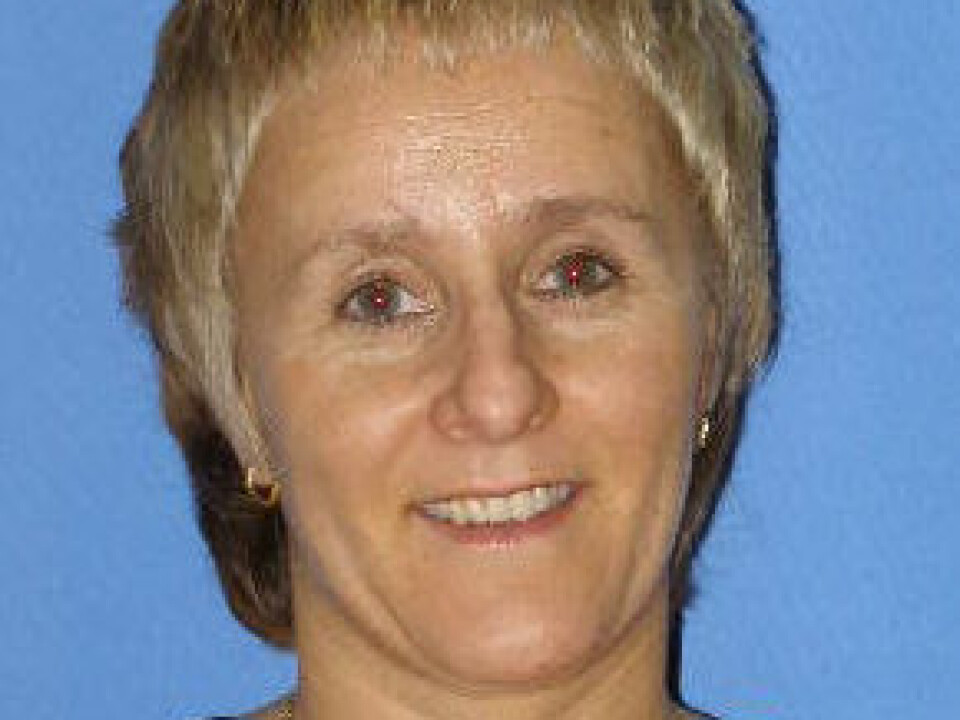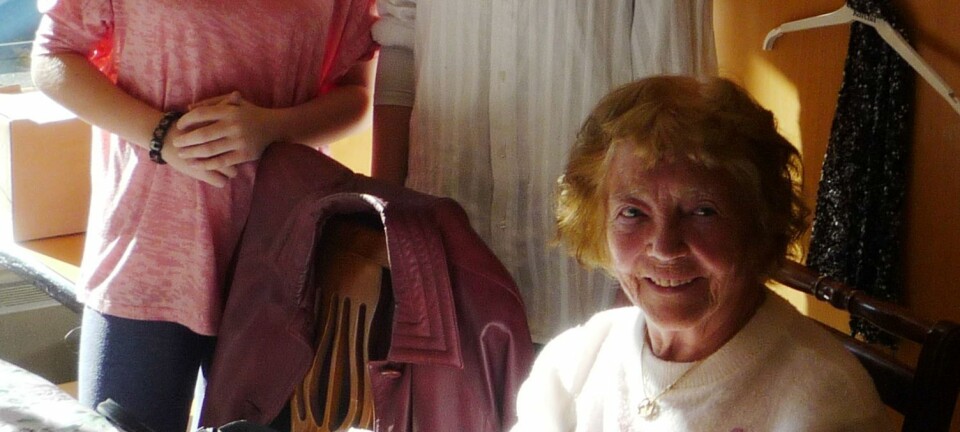
Young people want snowmobile cops
Rampant drunkenness and wild snowmobile riding at night concern teens and young adults in northern Norway. They want the police to patrol trails at night to curb accidents.
Denne artikkelen er over ti år gammel og kan inneholde utdatert informasjon.
Video: When interviewed for a study, girls claimed to focus on safety while boys were more interested in stunts like rearing up on snowmobiles.
Snowmobile accidents in Norway result on average in one or two fatalities and about 40 reported injuries each year.
The snowmobile season runs from December to May in the northern part of the country and driving is strictly restricted to specific trails.
Mountain police patrol these trails, but the police are generally absent at night.

A new study reports that youth often observe reckless and drunk driving at night and think law officers should be out there putting a stop to it. But the researcher who conducted the study and the local police say that police are not the answer -- instead, young people need to take more responsibility themselves.
Driving under the influence at night
“Nobody in this country has conducted a study of illegal blood alcohol levels and snowmobile accidents,” says Grete Mehus, a research fellow at Finnmark University College.
She says a study covering 25 years of snowmobile accidents in Sweden showed that many of the deaths involved driving under the influence of alcohol (DUIs).
For her doctoral thesis work, Mehus interviewed 81 young people aged 16 to 23 from Finnmark and Nord Troms Counties, which are in the northernmost part of Norway, as well as the arctic archipelago of Svalbard.
She asked what the subjects thought should be done to make the trails safer. Many of the young people responded that they would like to see a stronger police presence.
“Young people report a certain amount of drunken driving at night, away from safe trails,” says the researcher.
She says her informants think more police on night patrolt would reduce the number and severity of accidents, just by being there and taking breathalyzer and sobriety tests.
Mehus stresses that only a minority of young snowmobilers drive illegally.
Her study shows that most young people drive responsibly and would like to see a police crackdown on the miscreants who endanger travel on the trails.
“Reckless driving makes the trails unsafe for everyone and young people are afraid of having a crash with one of the wild drivers.”
Emphasis on deterrence
Torbjørn Aas is chief of police in the Vest Finnmark police district.
He appreciates the comments from youths in Melhus's study, and says he will factor them into the way he sets priorities.
Nevertheless, he has no immediate plans to send night patrols out on snowmobile trails.
The police chief says that in the spring of 2012, law officers in parts of his district did increase their presence on the trails during weekends.
“But we have to weigh our priorities − snowmobile driving against other assignments,” he adds.
Police Chief Aas also emphasises the importance of preventive initiatives.
“The best strategy for safety in traffic, including snowmobiles, is to deter hazards.”
North Norway is sparsely populated and he points out that the police cannot be everywhere at all times.
“Demands have to be made of snowmobile drivers themselves, in addition to efforts by parents, friends and others to foster the right culture and attitudes,” he says.
Barbecues and soaking up rays
Researcher Grete Mehus says that snowmobile riding means a lot in the everyday life of young people in the north.
“Finnmark has a long winter and lots of wilderness and many people in my study said that the snowmobile scene was one of the reasons they are willing to live up here.”
Mehus says her informants compared snowmobile riding to pleasure-boating in the south of Norway.
“You go out with friends, drive and have fun, grill food on a campfire, fish and get some sun,” she explains.
Of course the season for working on tans is broken off by the polar night, which lasts from November to January.
Safety is important whether you cruise around on roads, fjords or snow. Mehus found that one segment of the young population takes safety more seriously than others.
Risk and skills
Mehus split the youth in her study into female and males.
It should be no surprise which gender was more careful about driving snowmobiles.
“The girls answered that they drive carefully and are concerned about risks,” says the researcher.
In one of the articles for her doctorate, Mehus wrote that males aged 15–24 are most represented in the registry of snowmobile injuries in Vest-Finnmark County.
When she conducted group interviews and asked about driving habits, it was clear that the boys were more interested in tricks and honing their skills, like rearing up or driving on one ski.
“I don’t know whether this is a result of the group interview problem that can be encountered in research, that boys in groups of boys refrain from admitting that they are concerned about risks when asked,” she adds.
In any case, Mehus doesn’t think all risky behaviour is purely negative: “When young people experiment and put themselves to the test they are learning, so they have better reactions in difficult situations - such as if they have to turn fast on their snowmobile. So this can also help prevent accidents.”
Safety rules
Mehus concurs with the police chief that on-the-spot cops are not the only solution to safer trails.
“Young people themselves can’t shirk their responsibility just by calling for more police controls,” says the researcher.
She thinks that discussions about safe driving are important in youth groups and in the snowmobile association.
So she has made a plastic card in a pocket format with trail maps and safety guidelines for snowmobile riding. She now hands these out to young people in the hope of triggering debate and spreading awareness.
The guidelines she devised resemble those that are issued to cross-country skiers in the Norwegian mountains. Mehus has based her recommendations on the findings from her own studies and in part on accident research from the USA.
“It’s more effective if young people take responsibility for their safety themselves rather than to rely on surveillance by the police and others who could correct them,” she says. “Changes have to come from within.”
---------------------------
Read the Norwegian version of this article at forskning.no
Translated by: Glenn Ostling

































